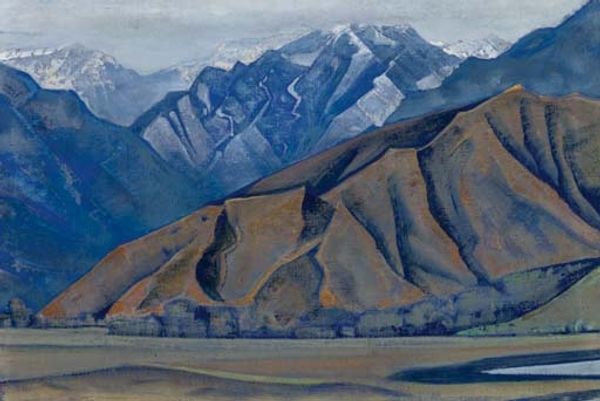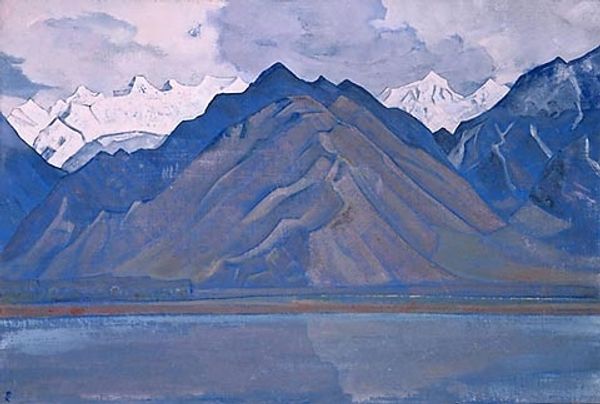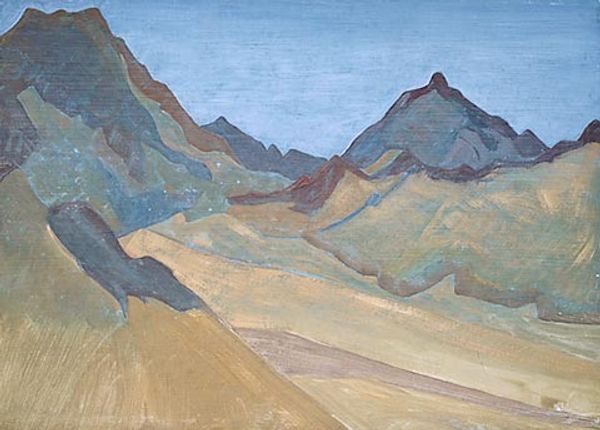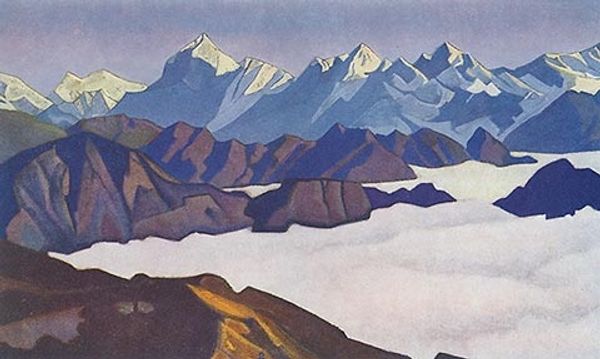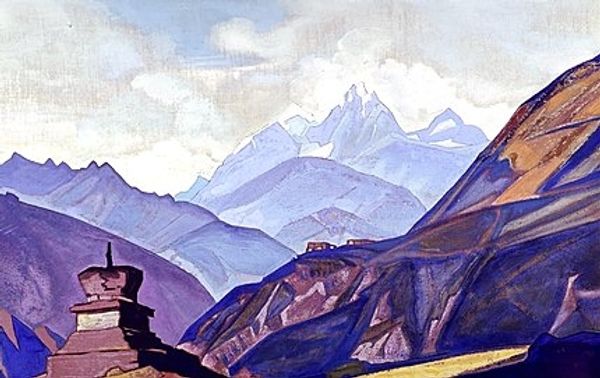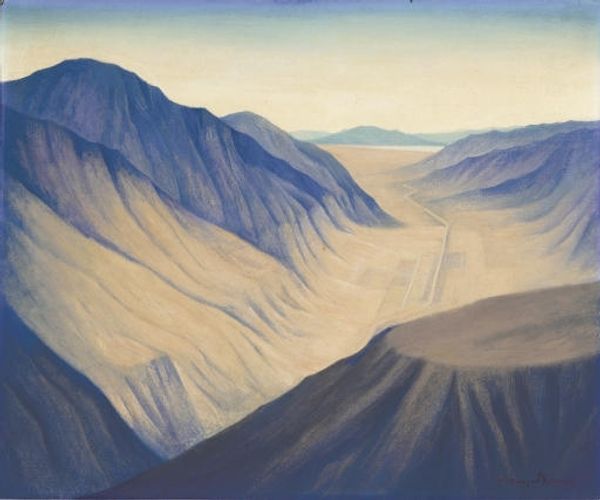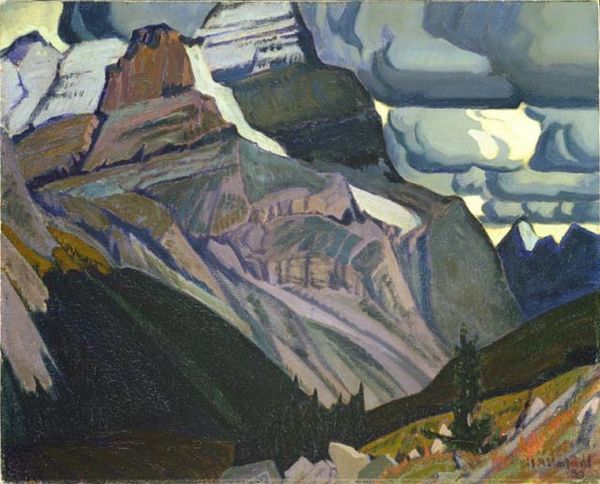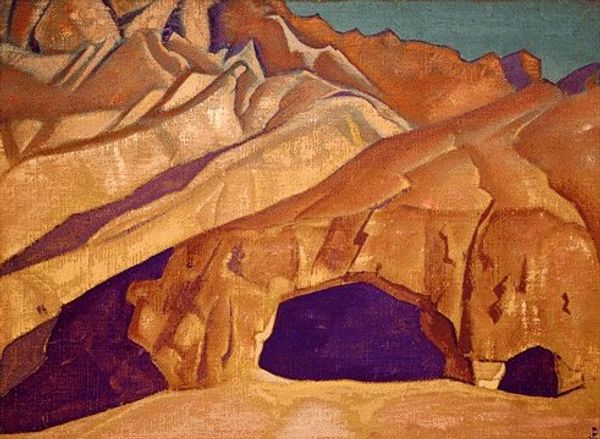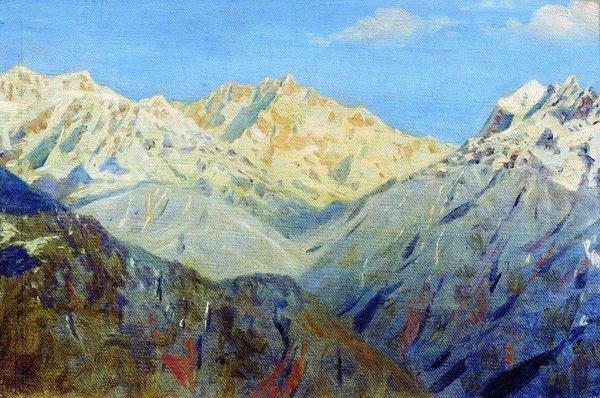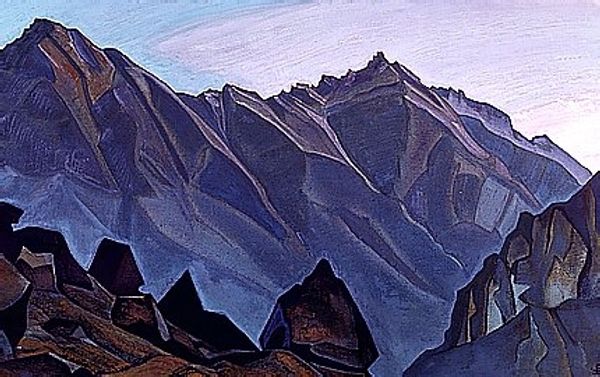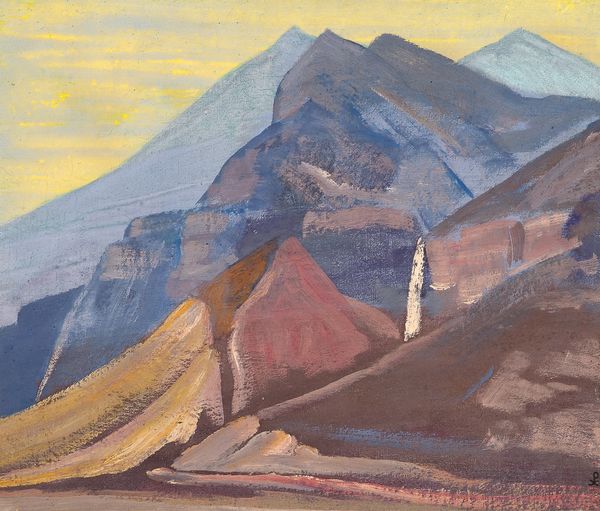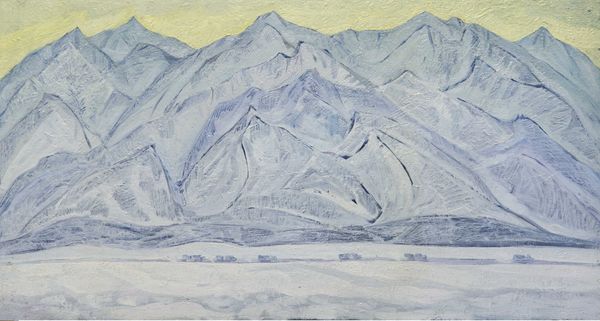
painting, oil-paint
#
painting
#
oil-paint
#
landscape
#
oil painting
#
mountain
#
expressionism
#
orientalism
#
expressionist
Copyright: Public domain
Editor: Right now we’re looking at “Ladakh,” an oil painting by Nicholas Roerich from 1926. I’m immediately struck by the blocky shapes, the geometry he sees in these mountains. There's a peacefulness to it, but also something...imposing. What catches your eye in this piece? Curator: Imposing, yes, and yet, doesn’t it also whisper of secrets held, of a place that breathes at its own ancient rhythm? Roerich wasn’t just painting mountains; he was trying to capture the soul of a landscape, its spiritual weight. Do you notice how he’s flattened the perspective? It almost feels like we're looking at a stage set, doesn't it? Editor: It does a little, actually! Like the mountains are almost cutouts. Curator: Exactly! And the colors aren't quite realistic, are they? That dreamy blue, the ochre, almost terracotta hues. Roerich was deeply influenced by Eastern philosophy and Theosophy. Ladakh, this high-altitude desert, became a symbol of spiritual ascent for him. Editor: So the colours aren't just for show, they're connected to…ideas? Curator: Precisely! It’s not about depicting Ladakh as it *is*, but as he *felt* it. That flattening, the colour choices...it pulls you into Roerich's emotional experience of the place, inviting you to find your own sacred space within it. Editor: That makes so much sense. I was so focused on the shape of the mountains, I totally missed the emotional layer! Curator: Art is so often like that; peeling away layers. We start with the visual, but if we listen closely, we might hear the heart of the artist beating underneath. What will you hear?
Comments
No comments
Be the first to comment and join the conversation on the ultimate creative platform.
